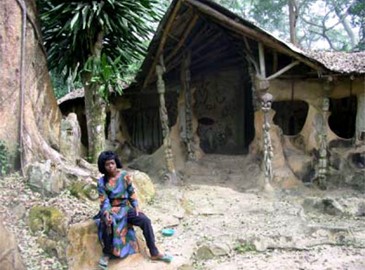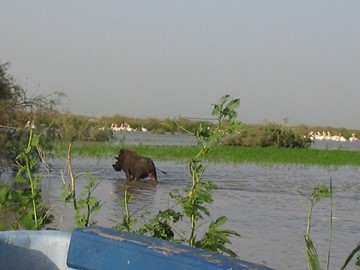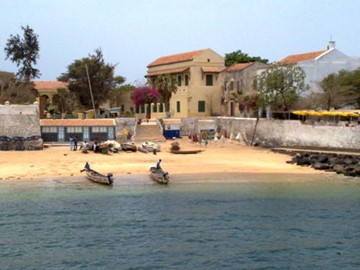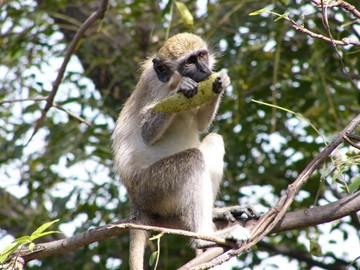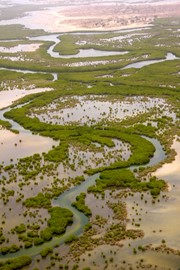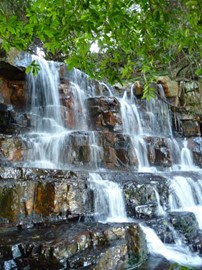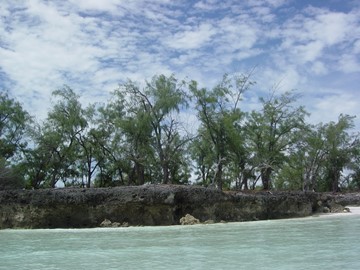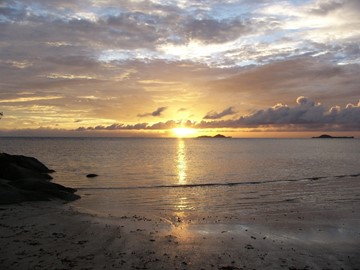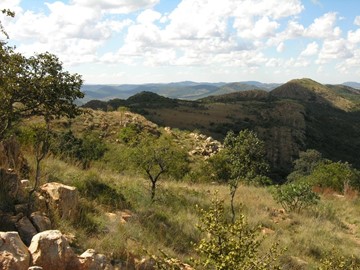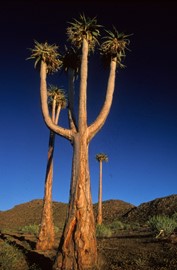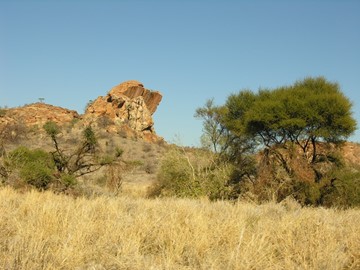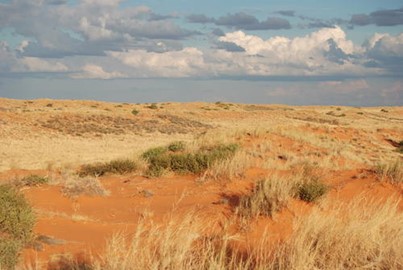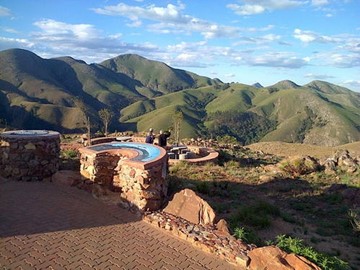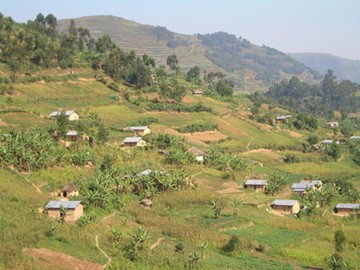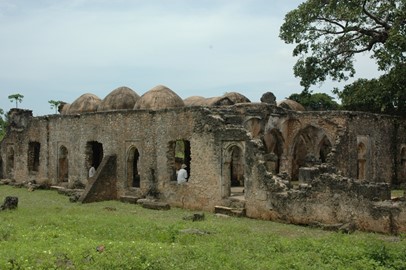region :: africa
Osun Osogbo
The Osun-Osogbo Sacred Grove, a UNESCO World Heritage site in Nigeria, is a centuries-old cultural and spiritual sanctuary dedicated to the Yoruba goddess Osun. This dense forest along the Osun River features ancient shrines, sculptures, and artworks, reflecting the rich traditions and religious practices of the Yoruba people. Revered as a symbol of fertility and prosperity, the grove hosts an annual festival that attracts devotees and visitors globally. Its preservation highlights its significance as a liv... Read More
Djoudj National Bird Sanctuary
Djoudj National Bird Sanctuary, a UNESCO World Heritage site in Senegal, is a vital wetland ecosystem renowned for its rich biodiversity. This sanctuary serves as a critical habitat for over 1.5 million migratory birds, including flamingos, pelicans, and herons, making it a key stopover on the West African flyway. Its unique landscape of marshes, lakes, and channels supports a variety of wildlife and offers exceptional opportunities for birdwatching and ecological research. The site’s global significance li... Read More
Island of Gorée
The Island of Gorée, a UNESCO World Heritage site off the coast of Senegal, is a small yet historically significant island known for its role in the Atlantic slave trade. It served as a key trading post where enslaved Africans were held before being shipped across the ocean, with sites like the House of Slaves standing as poignant reminders of this dark chapter. Today, the island preserves its colonial architecture and museums, offering insight into its past while attracting visitors globally. Its recogniti... Read More
Niokolo Koba
Niokolo-Koba, a World Heritage site in Senegal, is a biodiverse sanctuary along the Gambia River, renowned for its rich ecosystems and wildlife. It hosts a variety of habitats, including gallery forests, savannahs, and wetlands, supporting species like lions, leopards, elephants, and the rare West African chimpanzee. The site also preserves archaeological remains, offering insights into ancient human history. Despite challenges from poaching and development, it remains a critical conservation area and a tes... Read More
Island of Saint Louis
The Island of Saint-Louis, a UNESCO World Heritage site in Senegal, is a historic colonial settlement founded by French settlers in the 17th century. Renowned for its well-preserved architecture, the island showcases a blend of European and African influences, with charming pastel-colored buildings, narrow streets, and a distinctive grid layout. Once a bustling hub for trade and administration, it served as the capital of Senegal until 1957. Today, it stands as a cultural treasure, reflecting the region’s c... Read More
Saloum Delta
The Saloum Delta, a UNESCO World Heritage site in Senegal, is a biodiverse region where the Saloum River meets the Atlantic Ocean. This unique ecosystem features mangrove forests, lagoons, and islands that support a rich array of wildlife, including migratory birds and marine species. The site also holds cultural significance, with ancient burial mounds and archaeological remains reflecting centuries of human history tied to the delta’s resources. Its natural beauty and historical value make it a globally r... Read More
Bassari Country
Bassari Country, a UNESCO World Heritage site in Senegal, is a well-preserved cultural landscape showcasing the traditions of the Bassari, Fula, and Bedik peoples. Nestled in a remote region, it features traditional villages with circular thatched huts, terraced fields, and sacred sites that reflect a harmonious blend of human activity and the natural environment. Recognized in 2012, this site highlights unique agro-pastoral practices, social customs, and spiritual beliefs that have endured for centuries, o... Read More
Aldabra Atoll
Aldabra Atoll, a UNESCO World Heritage site in Seychelles, is a pristine coral atoll renowned for its exceptional biodiversity. It hosts one of the world’s largest populations of giant tortoises, thriving in a largely untouched ecosystem of mangrove forests, lagoons, and seagrass beds. The atoll’s isolation has preserved its unique flora and fauna, including rare birds like the Aldabra rail and vibrant marine life such as turtles and reef fish. Its scientific significance and natural beauty make it a critic... Read More
Vallée de Mai
Vallée de Mai, a UNESCO World Heritage site in Seychelles, is a pristine palm forest renowned for its unique biodiversity. This ancient ecosystem is home to the iconic coco de mer, a rare palm species bearing the world’s largest seed, alongside other endemic flora and fauna like the Seychelles black parrot. Often described as a 'living museum,' it offers a glimpse into a prehistoric world, preserved through its isolation and protected status. Visitors can explore its lush trails, immersing themselves in a n... Read More
iSimangaliso
iSimangaliso Wetland Park, a UNESCO World Heritage site in South Africa, is a biodiverse coastal reserve featuring a stunning mosaic of ecosystems, including swamps, lakes, beaches, coral reefs, and savannahs. Home to an array of wildlife such as hippos, crocodiles, and rare bird species, it holds significant ecological value and offers a pristine natural landscape. The park also encompasses historical and cultural landmarks, reflecting its deep-rooted heritage and importance to conservation efforts.
Fossil Hominid Sites
The Fossil Hominid Sites of South Africa, a UNESCO World Heritage site, are renowned for their exceptional contribution to understanding human evolution. These sites have yielded an extensive collection of fossilized remains of early hominids, including Australopithecus and Homo species, dating back millions of years. The discoveries, coupled with archaeological evidence, provide critical insights into the physical and cultural development of human ancestors, making it a globally significant paleontological... Read More
Robben Island
Robben Island, a World Heritage site in South Africa, is a small island off the coast of Cape Town with a rich historical legacy. It served as a place of banishment, isolation, and imprisonment for centuries, most famously as a maximum-security prison during the apartheid era, where political prisoners, including Nelson Mandela, were held. Today, it stands as a symbol of resilience and the triumph of the human spirit, offering visitors a poignant look into its past through preserved prison buildings and gui... Read More
Vredefort Dome
The Vredefort Dome, a UNESCO World Heritage site in South Africa, is the world's largest and oldest known meteorite impact structure, formed over 2 billion years ago when a massive asteroid struck Earth. This geological wonder features a central dome of uplifted granite surrounded by concentric rings of hills, showcasing unique rock formations and evidence of the catastrophic event that shaped the region. Recognized for its scientific significance, it provides valuable insights into Earth's history and the ... Read More
Richtersveld
The Richtersveld, a UNESCO World Heritage site in South Africa, is a striking desert landscape renowned for its unique biodiversity and cultural significance. This rugged region features dramatic mountains, arid plains, and rare succulent plants adapted to its harsh climate. It is also home to the Nama people, semi-nomadic pastoralists whose traditional way of life, including portable dome-shaped huts, reflects a deep connection to the environment. Recognized for its geological wonders and ancient human her... Read More
Cape Floral Region
The Cape Floral Region, a World Heritage site in South Africa, is renowned for its exceptional biodiversity and unique fynbos vegetation, a type of shrubland found nowhere else on Earth. This region hosts an astonishing variety of plant species, with over 9,000 types, many of which are endemic, making it one of the planet’s richest floral kingdoms. It also encompasses dramatic landscapes, including rugged mountains and coastal plains, which support a delicate ecosystem recognized for its global ecological s... Read More
Mapungubwe
Mapungubwe, a UNESCO World Heritage site in South Africa, was a thriving Iron Age kingdom from the 11th to 13th centuries, known for its advanced gold-working techniques and extensive trade networks across southern Africa and beyond. Archaeological discoveries, including a famous golden rhinoceros figurine, highlight its cultural and economic significance as one of the region’s earliest complex societies. The site’s hilltop ruins and artifacts offer valuable insights into precolonial African history and its... Read More
Khomani
Khomani, a World Heritage site in South Africa, is a significant cultural landscape recognized for its rich history and the enduring legacy of the Khomani San people, one of the region's indigenous groups. The site encompasses archaeological evidence of early human occupation, including rock art and artifacts that highlight ancient traditions and survival strategies in a harsh desert environment. It also represents the resilience of the Khomani San, who have maintained their cultural identity despite histor... Read More
Barberton Makhonjwa Mountains
The Barberton Makhonjwa Mountains, a UNESCO World Heritage site in South Africa, are renowned for their geological significance, featuring some of the oldest and best-preserved volcanic and sedimentary rocks on Earth, dating back 3.5 billion years. This site offers a unique window into the planet's early history, showcasing evidence of ancient microbial life and early tectonic processes. Its rugged terrain, adorned with greenstone belts, attracts scientists and visitors alike for its scientific value and na... Read More
Koutammakou
Koutammakou, the Land of the Batammariba, is a UNESCO World Heritage site located in northeastern Togo, recognized in 2004 for its unique cultural landscape. It is home to the Batammariba people, who are renowned for their distinctive mud tower-houses, known as takienta, which serve as both homes and symbols of Togo’s heritage. These structures, often two stories with flat or conical roofs, reflect the community’s social structure and harmonious relationship with nature, deeply tied to their rituals and bel... Read More
Bwindi Impenetrable
Bwindi Impenetrable National Park, a UNESCO World Heritage site in Uganda, is renowned for its rich biodiversity and dense, ancient rainforest. It is home to nearly half of the world’s endangered mountain gorilla population, offering a sanctuary for these majestic creatures. The park also supports a variety of other wildlife, including rare birds and primates, alongside unique plant species thriving in its rugged terrain. This ecological treasure draws researchers and eco-tourists eager to explore its natur... Read More
Rwenzori Mountains
The Rwenzori Mountains, a UNESCO World Heritage site in Uganda, are a stunning range known for their snow-capped peaks, including Margherita Peak, the highest point at 5,109 meters. Often called the 'Mountains of the Moon,' they feature diverse ecosystems, from lush montane forests to alpine meadows, supporting unique flora and fauna like the Rwenzori turaco. The range is also a vital water source, feeding rivers and lakes, with glacial landscapes adding to its dramatic beauty.
Tombs of Buganda Kings
The Tombs of Buganda Kings, a UNESCO World Heritage Site in Uganda, serve as the burial ground for four kabakas (kings) of the Buganda Kingdom, highlighting their spiritual and political significance to the Ganda people. Constructed in 1882 as a palace before being transformed into a royal cemetery in 1884, the site features the Muzibu Azaala Mpanga, a remarkable circular structure with a thatched dome, showcasing traditional Buganda architecture using organic materials like wood and reeds. Recognized in 20... Read More
Ruins of Kilwa Kisiwani and Songo Mnara
The Ruins of Kilwa Kisiwani and Songo Mnara, a UNESCO World Heritage site in Tanzania, are remnants of two historic port cities that thrived between the 13th and 16th centuries as key trading hubs along the Swahili Coast. These sites feature well-preserved stone structures, including mosques, palaces, and houses, showcasing the architectural prowess and cultural richness of the medieval Swahili civilization. Once bustling with commerce involving gold, ivory, and spices, the ruins reflect the region’s signif... Read More
Serengeti
Serengeti National Park, a UNESCO World Heritage site in Tanzania, is renowned for its vast savannahs teeming with wildlife, including the iconic 'Big Five' – lions, elephants, buffalo, leopards, and rhinos. It hosts the annual Great Migration, where millions of wildebeest, zebras, and other animals traverse the plains in search of fresh grazing lands, a spectacular natural phenomenon. The park's diverse ecosystems also support over 500 bird species and numerous predators, making it a global hotspot for bio... Read More
Zanzibar
The Stone Town of Zanzibar, a UNESCO World Heritage site, is a historic coastal trading hub renowned for its unique blend of African, Arab, Indian, and European architectural influences. This well-preserved urban settlement features a labyrinth of narrow streets lined with 19th-century stone houses, mosques, and palaces, reflecting its rich cultural heritage. Once a thriving center for the spice and slave trades, it remains a vibrant testament to its Swahili past, attracting visitors with its ornate wooden ... Read More
